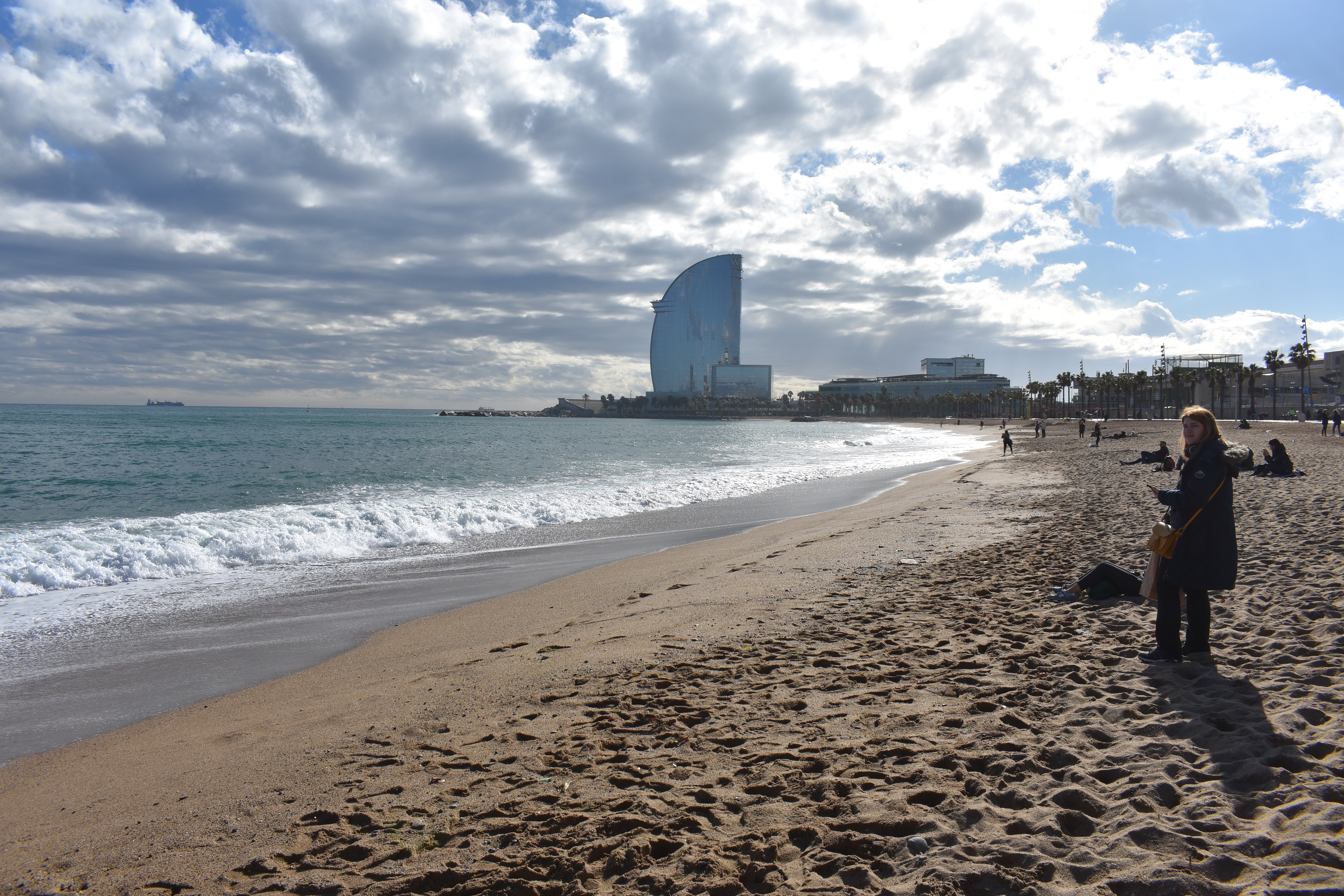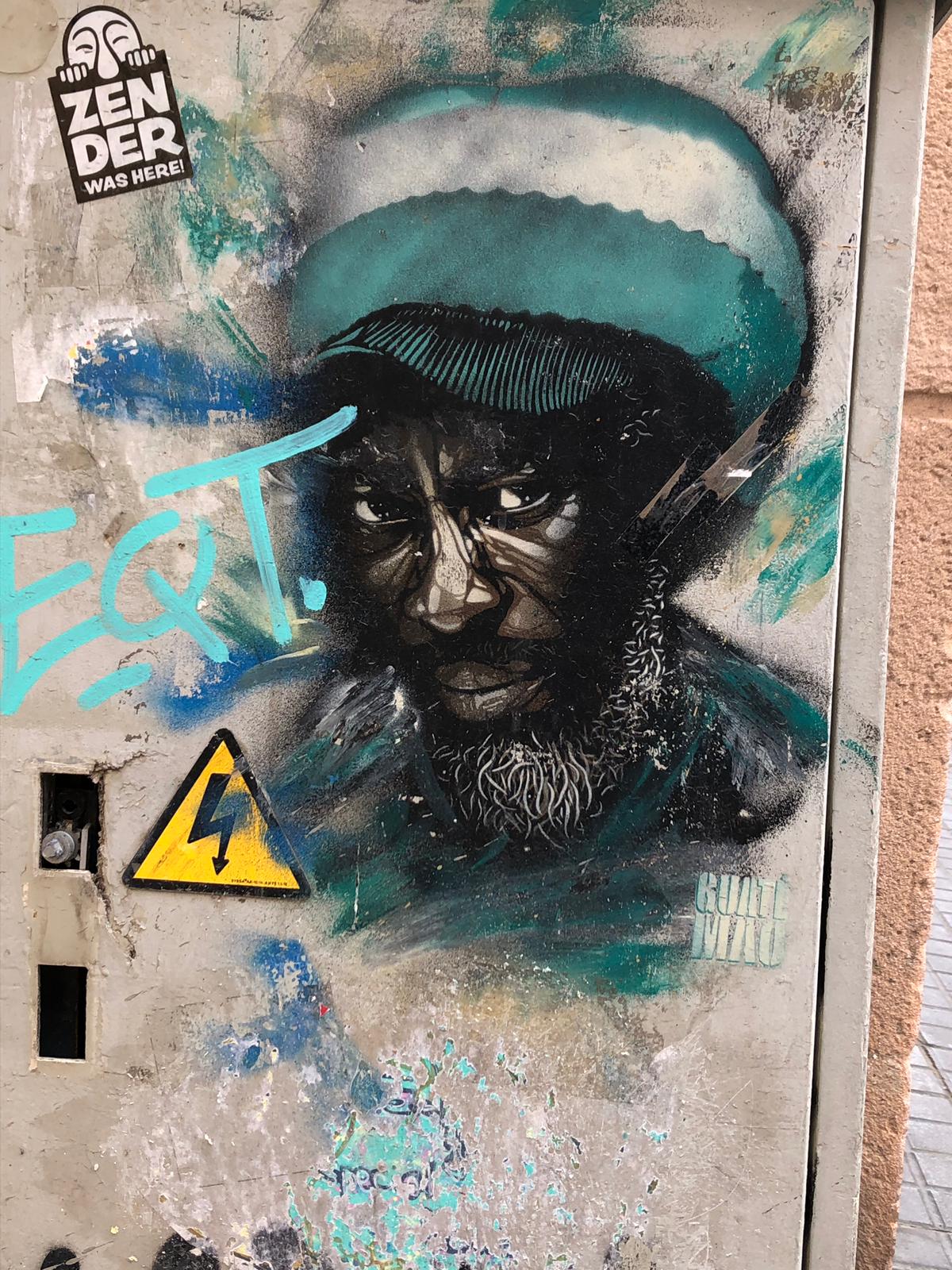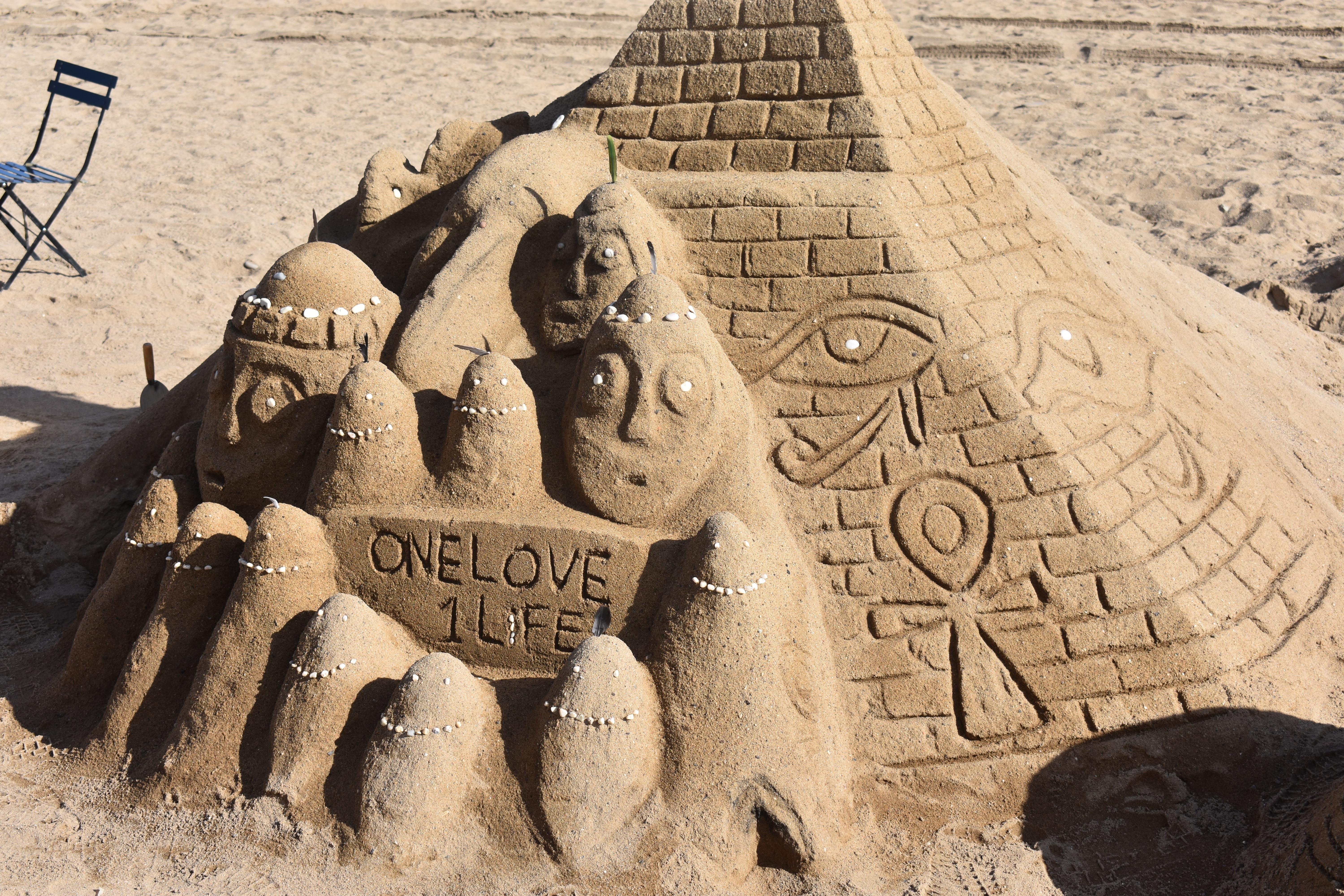Barceloneta is one of my favorite areas in Spain. I typically only travel to Barceloneta for the beach, but I was thankful for the walking class because it allowed us to further explore the area. The narrow back streets of Barceloneta give the feeling of an old village. There are decorated balconies with the Catalan flag, Spanish flag and other patriotic symbols. But, with Barceloneta being a great beach location, this area also attracts many tourists. It’s interesting to walk around the small corridors of the older town, then turn the corner to see a line of expensive sea food restaurants with waiters and waitresses beckoning people inside.

I find the history of this area incredibly interesting as well. The neighborhood was constructed during the 18th century for the residents of the Ribera neighborhood who had been displaced by the construction of the Ciutadella of Barcelona. Fishermen were the first to populate the area due to the close proximity of the sea. (De la Garza, 2014)
One of the most interesting aspects of Barcelona, was the way that the streets resemble the politics and the social movements of Barcelona. Barceloneta may not contain the most popular examples of graffiti art like the graffiti corner in Barcelona, but I believe the art still carries a similar weight. (Street art and graffiti in Barcelona, n.d.) Graffiti covers the walls of Barceloneta. It is hard to find a blank garage door or electrical box that hasn’t been brightly colored. During the walking class, I was in the group to study the graffiti. Some were scribbled words in Catalan or Spanish, and others were elaborate pictures. We also found different yellow ribbons representing Catalan independence as well as a sign that symbolized the Okupa Movement. In this area, it was very clear that people used their voice through this domain.

In addition, it was interesting to see the amount of people in each area of Barcelona, depending on what street you were on. At by the water, there are crowds of people, watching the water or gawking at the sand castles built along the beach. Even though I am a temporary tourist, I find myself getting overwhelmed with the crowds. It made me further understand why in addition to flags, some people had signs that encouraged tourists to leave the area. Being in Barceloneta really did make me think about the impacts of tourism on Barcelona. The beautiful streets in that area look almost as they did 200 years ago, and I do realize that many people have grown up in that neighborhood and have been greatly impacted by tourism. Especially, with the influx of Airbnbs and illegal temporary housing for tourists. (França, 2014) But, at the same time, the area greatly benefits from the influx of people as there economy is greatly impacted with the money spent in the area.

Overall, Barceloneta was a great area and I enjoyed seeing both the traditional areas, the daily life and also the tourism in the area and how locals react.
Sources:
De la Garza, M. M. (2014). Transformaciones urbanísticas y movimientos vecinales actuales. El caso de la Barceloneta, Barcelona. Geo Crítica. Recuperado desde: http://www.ub.edu/geocrit/coloquio2014/Muna%20Makhlouf%20De%20la%20Garza.pdf
França, J. (22 agosto 2014). La Barceloneta, un barrio desbordado por el turismo. El Diario. Recuperado desde: http://www.eldiario.es/catalunya/Barceloneta-barriodesbordadoturismo_0_295020536.html
Street art and graffiti in Barcelona. (n.d.). Retrieved from https://www.timeout.com/barcelona/art/street-art-and-graffiti-in-barcelona
